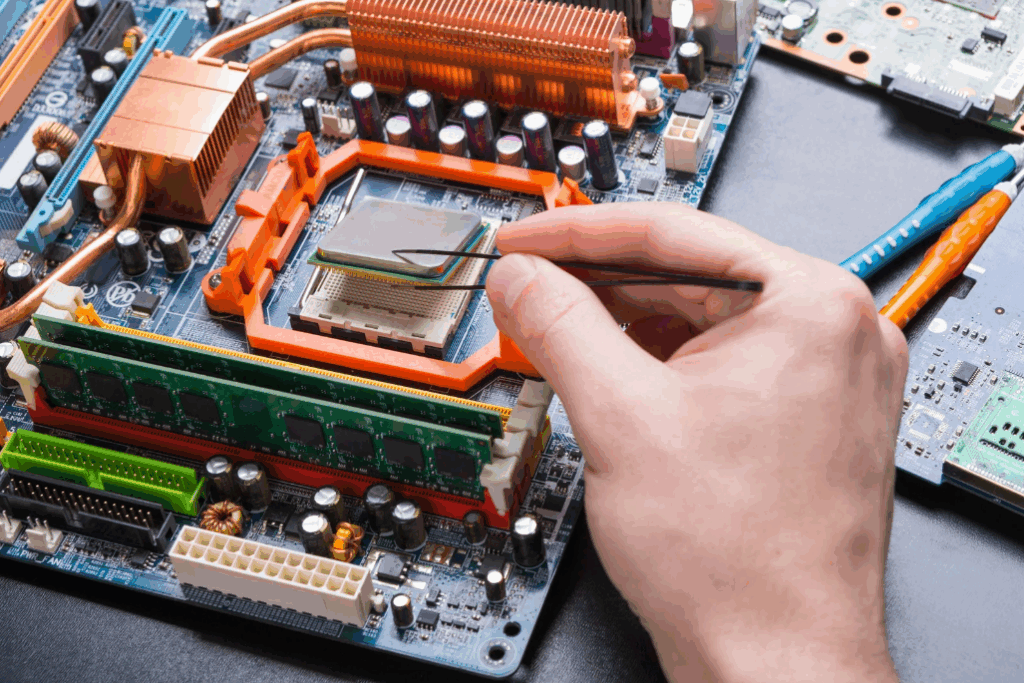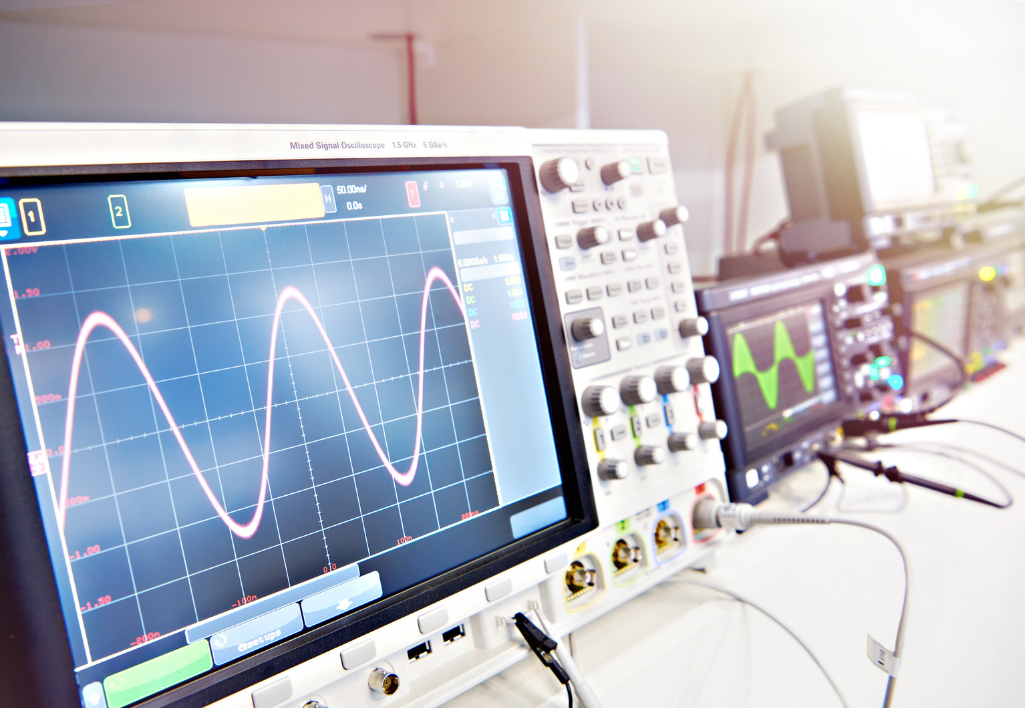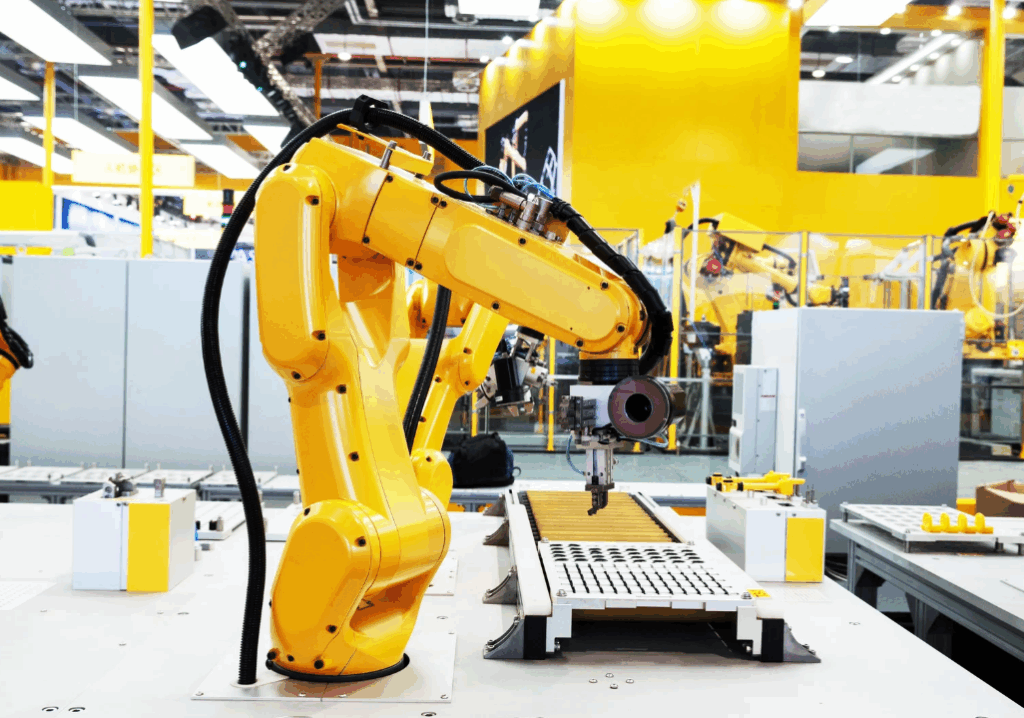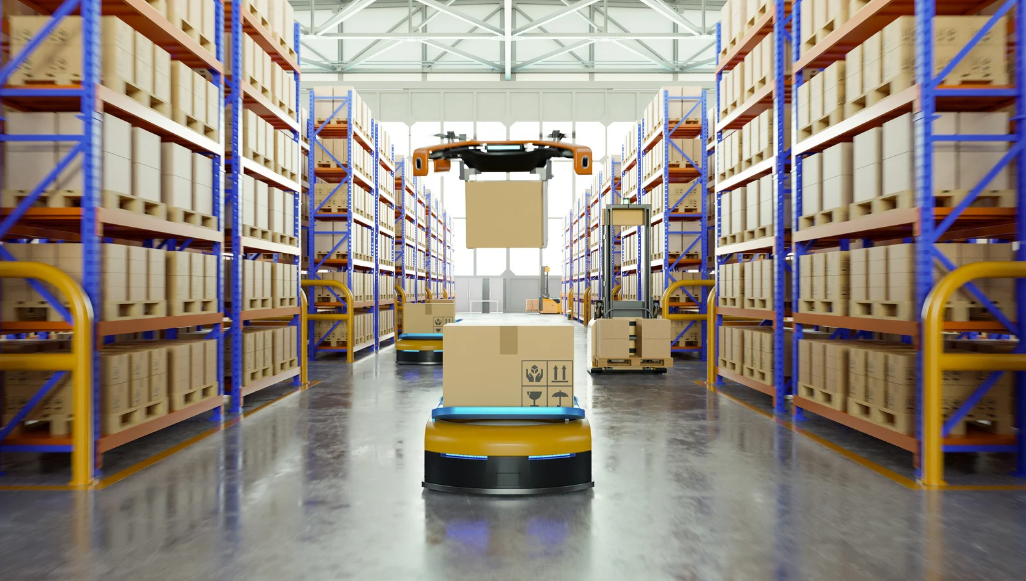How Piezo Transducers Work
Piezo transducers are pretty neat devices. They’re all about converting energy from one form to another. Specifically, they transform mechanical energy into electrical energy, and vice versa. Think of it like this: you squeeze or bend a piezo material, and it generates electricity. Or, you apply electricity to it, and it changes shape. This ability to act as both a sensor and an actuator is what makes them so versatile.
- As sensors, they can detect vibrations, pressure changes, or even tiny movements.
- As actuators, they can create precise movements or generate force.
- They are used in high-frequency applications.
Piezoelectric materials are a subset of ferroelectric ceramics. They show the piezoelectric effect, which means they create an electric charge when you put mechanical stress on them. This effect was first discovered way back in 1880 by the Curie brothers. These materials are made by treating polycrystals that contain oxides like zirconia, lead oxide, and titanium oxide. This treatment gives them really good mechanical and stable piezoelectric properties, which makes them super useful in all sorts of electronic devices.

Types of Piezo Transducers
There’s a whole range of piezo transducer types out there, each designed for specific jobs. You’ve got your basic shapes like disk-type piezoelectric transducers, rods, and cylinders, which are good for general-purpose applications. Then there are plates and blocks, often used in sensors. Tubes are useful for applications needing radial expansion or contraction. Bending elements are great for creating movement, and rings are common in ultrasonic applications. And don’t forget spheres and hemispheres, which can focus energy in specific directions. Here’s a quick rundown:
- Disks, rods, and cylinders: General-purpose applications
- Plates and blocks: Sensors
- Tubes: Radial expansion/contraction
Custom piezo transducers are also a thing. These are made to fit the exact needs of whatever application they’re used in, making sure they work as well as possible.
Properties of Piezoelectric Ceramics
Piezoelectric ceramics have some pretty interesting properties that make them useful. Their dielectric properties show how they react to an electric field, and their elasticity tells you how they deform when you apply force. But the most important property is, of course, piezoelectricity. This is where you get the positive and inverse piezoelectric effects. Positive piezoelectricity is when you squeeze the material and it makes electricity. The inverse effect is when you apply electricity and it changes shape. These piezoelectric ceramics are used in many applications. You can use the piezoelectric effect to make cool stuff happen. For example, you can use it to make sound, like in buzzers and headphones. You can also use it to make sparks, like in gas stove lighters. And you can even use it to protect yourself from radiation, like in nuclear safety goggles. It’s a pretty amazing material with a lot of different uses.
Advanced Piezo Disc Technologies
Advancements in Piezoelectric Materials
It’s not just about the design of the transducers themselves; the materials are getting better too. Researchers are always looking for new stuff that can boost performance and durability. This includes exploring both organic and inorganic materials. These new materials are leading to piezoelectric sensors with:
- Superior performance: Higher sensitivity and more efficient energy conversion.
- Enhanced durability: Withstanding extreme temperatures, pressures, and corrosive environments.
- Greater flexibility: Making them ideal for applications like underwater sonar.
The cool thing is that these advancements aren’t happening in a vacuum. They’re all feeding into each other. Better materials mean better actuators, and better actuators open up new possibilities for sensors and other applications. It’s a constant cycle of innovation.
Applications of Custom Piezo Transducers in Medical Technology
Custom piezo transducers are super important in today’s medical world. They bring accuracy and dependability to a bunch of different uses. I mean, think about it – we’re talking about stuff that can really impact people’s health, so getting it right is key.
Ultrasonic Imaging
Piezoelectric transducers? They’re all over medical ultrasound gear. Seriously, these things have come a long way, letting doctors keep a closer eye on pregnancies and even do surgery with smaller cuts. The accuracy of these transducers is super important for getting clear images and making good diagnoses. It’s pretty wild how far the tech has come.
Surgical Instruments
When it comes to surgery, piezoelectric ceramics are prized for their accuracy. They’re used in ultrasonic surgical tools, which allow for precise cutting and less damage to nearby tissue. This tech is a must for stuff like laser eye surgery, where getting it just right is everything. It’s amazing how these tiny devices can make such a big difference in the operating room.
Medical Diagnostic Applications
Custom piezo transducers are also used in medical diagnostic applications. Think about wearable health devices. These gadgets can track all sorts of health stats, giving real-time info to patients and doctors. Having piezoelectric sensors in wearables makes sure the measurements are spot-on, which makes these health trackers way more useful. It’s all about getting the right data to make the right calls.

The medical field really depends on custom piezo transducers to get high accuracy and reliability in different applications. It just goes to show how important these little devices are for making sure things run smoothly and safely in healthcare.
Designing Custom Piezo Transducers for Specific Applications
Designing a custom piezo transducer? It’s not just about grabbing any old part. It’s about carefully considering what you need it to do and how it needs to do it. It’s like tailoring a suit – it has to fit perfectly to perform its best.
Material Selection
Choosing the right material is super important. The material dictates how well your transducer will perform. You can’t just pick something at random. Piezoceramic composites are often a good choice because they have great electromechanical properties. But, you also need to think about what the transducer will be exposed to. Will it be in a humid environment? Will it be exposed to high temperatures? The material needs to be compatible with the application. For example, a transducer used in medical devices will need to be made of biocompatible materials. The advancement in materials science has led to new piezoelectric materials that offer superior performance and durability. Researchers are exploring organic and inorganic materials to further enhance the capabilities of piezo transducers.
Shape and Size Considerations
The shape and size of your transducer can really affect how well it works. A disk-type piezoelectric transducer might be great for some things, like creating acoustic cavitation in a fluid. But if you need something for a different application, you might need a rod, a cylinder, or a plate. It all depends on what you’re trying to achieve. Think about the space you have available and how the shape will affect the way the transducer vibrates or moves.
Integration with Electronic Systems
Getting your transducer to play nicely with the rest of your electronics is key. You need to make sure that the electrical characteristics of the transducer match the requirements of your system. If the impedance is off, or the voltage levels are wrong, you’re going to have problems. Proper integration can really boost the overall performance and reliability of your device. It’s like making sure all the instruments in an orchestra are tuned to the same pitch. If they’re not, the music will sound terrible.
When designing custom piezo transducers, it’s essential to consider the specific requirements of the application to achieve optimal performance. It’s a process that requires careful planning and attention to detail, but the results can be well worth the effort.
Industrial Applications of a Piezo Disc
Precision Positioning Systems
Piezo discs are super useful in industrial settings where you need things moved just so. Think about it: in manufacturing, you might need to place tiny components with incredible accuracy. That’s where piezo transducers come in. They can move things in tiny increments, making them perfect for precision work. They’re also really fast, which helps speed up production.
Vibration Monitoring
Another cool use is vibration monitoring. Machines vibrate, and sometimes those vibrations mean something’s wrong. Piezo discs can pick up these vibrations and turn them into electrical signals. This lets engineers know if a machine is about to break down, so they can fix it before it causes big problems. It’s like giving machines a voice to tell you when they’re not feeling well. This predictive maintenance can save companies a lot of money.
High-Frequency Nano- and Micro-Dispensing
Piezo discs are also used for dispensing tiny amounts of liquids or powders. This is important in industries like pharmaceuticals and electronics, where you need to apply precise amounts of materials. The high frequency of piezo elements allows for very fine control over the dispensing process.
Imagine a tiny inkjet printer, but instead of ink, it’s dispensing medicine or glue. That’s essentially what’s happening with high-frequency dispensing. The piezo disc vibrates rapidly, pushing out tiny droplets with amazing precision. It’s a game-changer for industries that need to work with very small quantities of materials.
Here’s a quick rundown of why piezo discs are great for this:
- Precise control over dispensing volume
- High dispensing frequency
- Ability to handle a wide range of materials
- Compact size for easy integration into systems
The Role of Custom Piezo Transducers in Consumer Electronics
Custom piezo transducers are all over consumer electronics. They bring unique abilities that make using our gadgets better. These devices change physical actions into electrical signals, which is super useful in lots of ways.

Smartphones and Tablets
In smartphones and tablets, piezo transducers do a bunch of things. They’re used in haptic feedback systems, which create the vibrations you feel when you type or get a notification. This makes the user experience more interactive and responsive. They also help with things like pressure-sensitive buttons and even some types of speakers. Think about how your phone knows how hard you’re pressing on the screen – that’s often thanks to a piezo transducer. These piezoelectric products are essential for modern touchscreens.
Voice Changers and Sound Transducers
Piezo transducers are also key in audio applications. They can be used to make tiny, efficient speakers, especially in devices where space is tight. Plus, they show up in voice changers and other audio effects gadgets. The ability of a piezo element to accurately reproduce sound makes it a good choice for these applications. They can also be used as very sensitive microphones.
Piezo Lighters for Gas Stoves
Ever used a gas stove with a built-in igniter? That’s piezo technology at work! When you push the button, it puts mechanical stress on a piezoelectric material, which creates a high-voltage spark. This spark ignites the gas. It’s a simple, reliable, and safe way to light a stove without needing matches or a separate lighter. These disk-type piezoelectric transducers are very common.
Piezo transducers are a big part of making our everyday gadgets work better. They’re small, efficient, and can do a lot of different things, which is why they’re so popular in consumer electronics. As technology keeps moving forward, we’ll probably see them used in even more creative ways.
Future Trends in Custom Piezo Transducer Technology
Miniaturization
It’s pretty clear that things are getting smaller, and piezo transducers are no exception. The trend toward miniaturization is pushing the development of smaller, more efficient devices. These tiny transducers are super important for things like medical implants and small consumer gadgets where space is tight. As tech keeps moving forward, expect even smaller and more powerful transducers to show up. It’s kind of wild to think about how much smaller they can actually get.
Enhanced Sensitivity and Performance
Another big thing happening is the push for better sensitivity in piezo transducers. This means more precise measurements and better performance in all sorts of applications, from sensors in factories to medical tests. Better sensitivity can lead to more accurate data and better results in important fields. Think about how much more accurate medical diagnoses could be with increased sensitivity. It’s a game-changer.
Energy Harvesting Applications
Piezo transducers are also being looked at for their potential in energy harvesting. By turning mechanical energy into electrical energy, these devices can power small electronics and sensors, which helps with sustainable and efficient energy solutions. This is especially relevant with the growing demand for renewable energy sources. Imagine custom piezo transducers powering your phone just from walking around! That’s the dream.
The future of piezoelectric materials looks promising. Continued development will play a big role in meeting the growing demand for sustainable and efficient energy sources. It’s not just about making things smaller or more sensitive; it’s about making them more sustainable too.
The future of custom piezo transducers is looking really exciting! New ideas and ways to make them are always popping up, making these tiny devices even more amazing. If you’re curious about how these cool advancements could help you, or just want to learn more, head over to our website. We’ve got lots of info waiting for you!
In Summary:
So, when you look at it, piezo discs are pretty amazing. They’re in all sorts of stuff we use every day, even if we don’t always notice. From helping doctors see inside the body to making sure machines run smoothly, these little discs do a lot of heavy lifting. They can sense things, make sounds, and even create tiny, super-accurate movements. As new ideas keep coming, you can bet piezo discs will be right there, helping to make cool new things happen. They really are a big part of how modern tech works.
Frequently Asked Questions
What exactly is a piezo disc?
A piezo disc is a small, round piece of material that can create electricity when squeezed or bent, and can also change its shape when electricity is applied. Think of it like a tiny, smart disc that can feel pressure or make small movements.
How does a piezo disc actually work?
Piezo discs work because of something called the ‘piezoelectric effect.’ When you push on them, the tiny parts inside shift around, creating a small electrical charge. And if you send electricity through them, those same tiny parts move, causing the disc to vibrate or change shape. It’s a neat trick of physics!
Where can I find piezo discs in everyday life?
Piezo discs are super useful in many everyday items! They’re in your gas grill lighters, making the spark to light the flame. They’re also in some speakers and microphones, helping to turn sound into electrical signals and back again. Plus, they’re used in things like medical ultrasound machines to see inside the body.
How are piezo discs used in medical technology?
In healthcare, piezo discs are like tiny superheroes. They’re key in ultrasound machines, letting doctors see babies before they’re born or check on organs without needing surgery. They’re also used in some surgical tools for very precise cuts and in diagnostic devices to help figure out what’s going on inside a patient.
What does ‘custom’ mean for a piezo disc?
Custom piezo discs are made specifically for a certain job. Instead of a one-size-fits-all approach, these discs are designed with special materials, shapes, and sizes to work perfectly in a particular device or system. This makes them much more effective for unique tasks.
What’s next for piezo disc technology?
The future looks exciting for piezo discs! Scientists are working on making them even smaller so they can fit into tiny gadgets. They’re also trying to make them more sensitive and powerful. A cool new idea is using them to ‘harvest’ energy, meaning they could collect small amounts of power from vibrations or movements to run small electronics.



